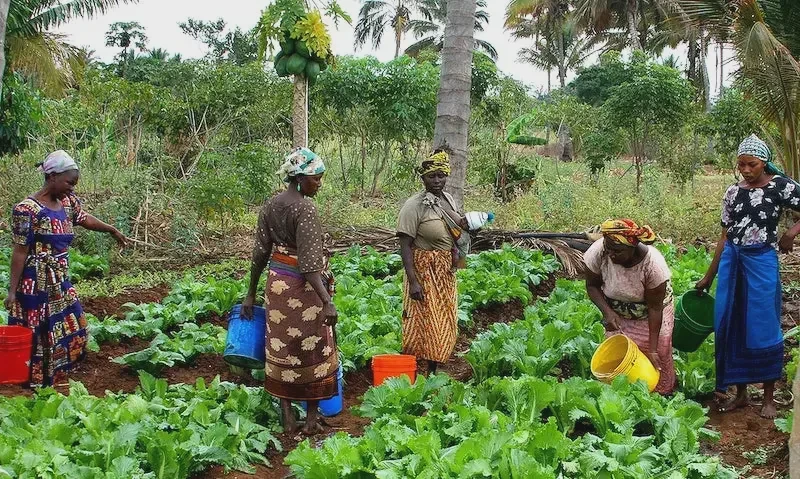Hunger and malnutrition are soaring in Africa. There is a helpful solution: GM crops
Hunger and malnutrition are soaring in Africa. There is a helpful solution: GM crops


Hunger and undernourishment are two elements of food insecurity that have plagued Africa for years. And the menace is growing.
In 2022, the African region accounted for the highest level of hunger as described by Global Hunger Index. According to the World Health Organization, over 340 million Africans were undernourished and severely food insecure between 2014 and 2020.
Low agricultural productivity and post-harvest losses are some of the reasons.
Evidence from the past two decades suggests that genetically modified (GM) crops could resolve low agricultural productivity, nutrition and food insecurity on the continent.
Scientists have shown that GM technology increases yield, develops disease-resistant crops, and creates varieties that can tolerate drought.
But the technology is controversial. In Africa, only Nigeria, Eswatini, Ethiopia, Malawi, Sudan, South Africa and Kenya allow commercial production and importation of GM products. Other African countries oppose them, largely because of the European Union’s (EU) stance on GM products, limited scientific capacity and the high cost of regulation.
The EU’s strict regulations on GM products have affected its trade partners, including countries in Africa. Egypt and Burkina Faso, which had commercialised GM maize and cotton in 2008, backtracked on GM partly because of their trade relationship with the EU.
This is an excerpt. Read the original post here

 | Videos | More... |

Video: Nuclear energy will destroy us? Global warming is an existential threat? Chemicals are massacring bees? Donate to the Green Industrial Complex!
 | Bees & Pollinators | More... |

GLP podcast: Science journalism is a mess. Here’s how to fix it

Mosquito massacre: Can we safely tackle malaria with a CRISPR gene drive?

Are we facing an ‘Insect Apocalypse’ caused by ‘intensive, industrial’ farming and agricultural chemicals? The media say yes; Science says ‘no’
 | Infographics | More... |

Infographic: Global regulatory and health research agencies on whether glyphosate causes cancer
 | GMO FAQs | More... |

Why is there controversy over GMO foods but not GMO drugs?

How are GMOs labeled around the world?

How does genetic engineering differ from conventional breeding?
 | GLP Profiles | More... |

Alex Jones: Right-wing conspiracy theorist stokes fear of GMOs, pesticides to sell ‘health supplements’




 Viewpoint — Fact checking MAHA mythmakers: How wellness influencers and RFK, Jr. undermine American science and health
Viewpoint — Fact checking MAHA mythmakers: How wellness influencers and RFK, Jr. undermine American science and health Viewpoint: Video — Big Solar is gobbling up productive agricultural land and hurting farmers yet providing little energy or sustainabilty gains
Viewpoint: Video — Big Solar is gobbling up productive agricultural land and hurting farmers yet providing little energy or sustainabilty gains Fighting deforestation with CO2: Biotechnology breakthrough creates sustainable palm oil alternative for cosmetics
Fighting deforestation with CO2: Biotechnology breakthrough creates sustainable palm oil alternative for cosmetics Trust issues: What happens when therapists use ChatGPT?
Trust issues: What happens when therapists use ChatGPT? California, Washington, Oregon forge immunization alliance to safeguard vaccine access against federal undermining
California, Washington, Oregon forge immunization alliance to safeguard vaccine access against federal undermining 30-year-old tomato line shows genetic resistance to devastating virus
30-year-old tomato line shows genetic resistance to devastating virus The free-range chicken dilemma: Better for birds, but with substantial costs
The free-range chicken dilemma: Better for birds, but with substantial costs ‘You have to treat the brain first’: Rethinking chronic pain with Sanjay Gupta
‘You have to treat the brain first’: Rethinking chronic pain with Sanjay Gupta
